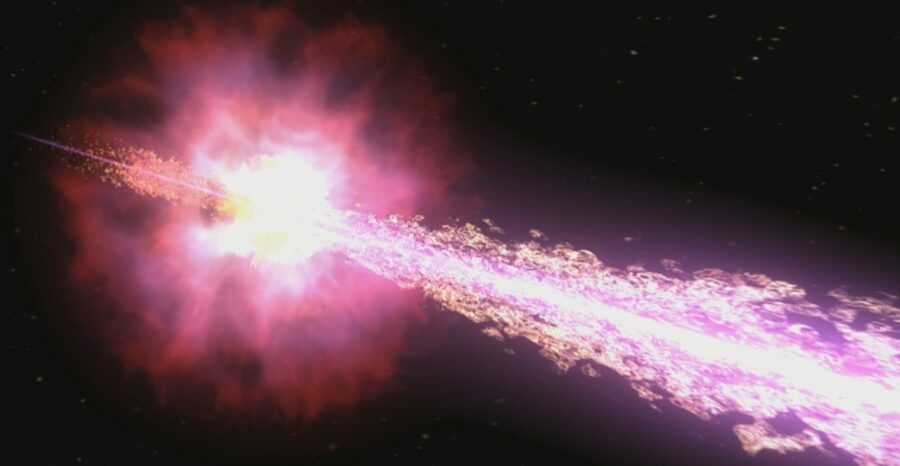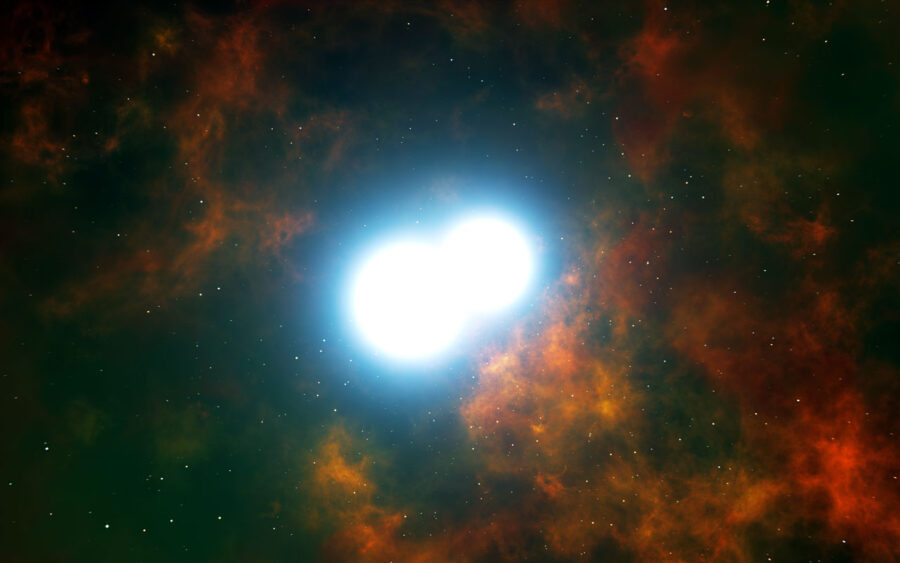Brightest Cosmic Burst Since The Big Bang Observed And There’s Something Strange Going On
A gamma-ray burst from 2.4 billion light years away is the new brightest object of all time.

Gamma-ray bursts (GRBs) have always been a spectacular sight for scientists to research, but a recent phenomenon has totally rocked our understanding of how these celestial explosions are structured, according to Space.com. The gamma-ray burst in question has been given the official title of GRB 221009A, but has appropriately received the nickname “the BOAT,” or the brightest of all time. Originally discovered on October 9 2022, the BOAT stood out immediately to researchers because of how exceptionally bright it was compared to other GRBs.
The craziest part about the discovery of GRB 221009A is the sheer amount of power that it wields compared to what your typical gamma-ray bursts emit. Experts assert that the average gamma-ray burst blasts out more energy in the space of a few seconds than the sun will produce in its entire lifetime and that GRB 221009A likely goes through a similar process but 10 times brighter, given its unique structure. A George Washington University graduate student and author of the study resulting from this celestial event states that “GRB 221009A represents a massive step forward in our understanding of gamma-ray bursts and demonstrates that the most extreme explosions do not obey the standard physics assumed for garden variety gamma-ray bursts.”
Dr. Hendrik Van Eerten from the Department of Physics at the University of Bath in the UK suggests that GRB 221009A’s extreme level of brightness, as well as its slow-fading after-glow, is the result of a couple of different variables. The first factor to consider is the fact that the gamma-ray burst’s jet was angled directly at Earth, giving us front-row tickets to the event from our vantage point, which would account for its initial brightness.
Additionally, it’s a known fact that a gamma-ray burst’s jets need to pass through the collapsing star in which they are formed, but in this particular instance, the shock-heated gas involved in its formation kept making its way to our line of site in the form of an after-burn despite its distance from Earth.

In this case, GRB 221009A picked up a staggering amount of celestial material during its formation, making it much wider than the average gamma-ray burst. In other words, even though this particular gamma-ray burst is an unthinkable 2.4 billion light years away from Earth, the sheer intensity of the burst combined with its radius is why we’re able to detect its afterglow from so far away, and for such an extended amount of time.
Gamma-ray bursts ultimately lead to the birth of black holes and have until recently been described as having a shape similar to that of an ice cream cone. GRB 221009A’s structure implies that we’re dealing with a much more complex jet formation than what we’re used to observing. Dr. Van Eerten asserts that more detailed computer simulations need to be utilized to understand what we’re witnessing fully, but he’s excited about the prospects we’re presented with in regard to understanding the formation of black holes as well as testing out other dark matter models based on this discovery.
Gamma-ray bursts similar in scope to GRB 221009A are a phenomenon that we only get to witness roughly once every thousand years, making this event the brightest we’ve ever recorded through modern science. As we further uncover the mysteries of this gamma-ray burst and continue to create simulations of its jet structures, we’ll not only be able to establish a firmer grasp on their formations but ultimately have a much better understanding of our universe as a result.












